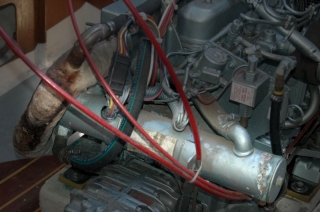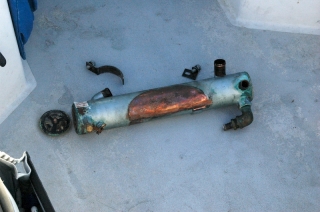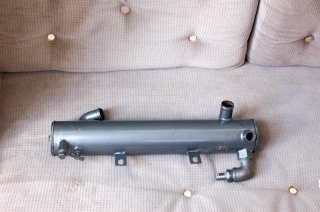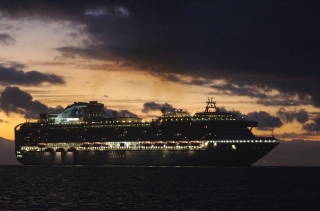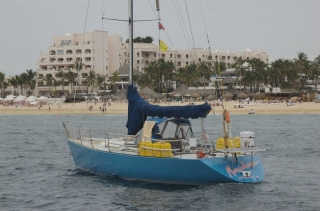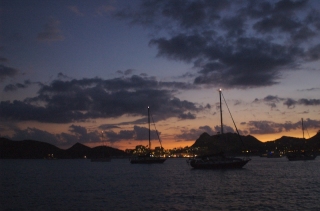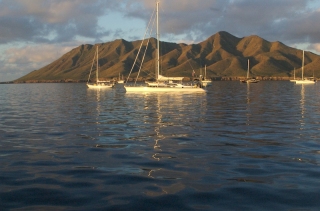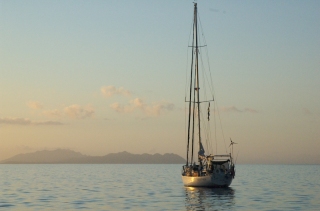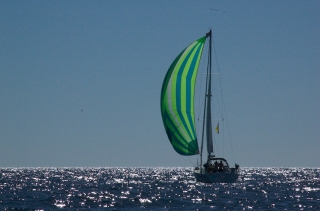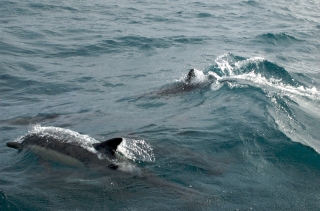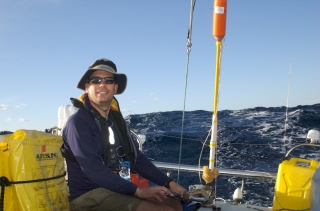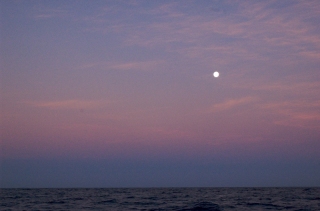May 05 2010
Sailboat Heat Exchanger Problems and Repair
One fine day, I started the engine of the sailboat and saw the temperature continue to rise–rather than holding at its normal low temperature. Upon further inspection, there was about a gallon of lovely, green anti-freeze sloshing around in the bilge–and, the culprit was the heat exchanger.
Cooling on a sailboat (or powerboat) is a bit different than your car, but the principle is the same. Sea water is too rough and has too many particulates to circulate through the machined parts of your motor (plus salt water electrolysis can eat away internal parts of the motor), so a closed system with freshwater is used. This is exactly like your car. The systems on sailboats even use anti-freeze to raise the freshwater boiling point to a higher temperature because–well, boiling water (steam) isn’t going to keep your engine cool.
The main difference between the two systems is that instead of a car radiator with its hundreds of internal cooling fins that uses fresh air from the car fan to decrease the temperature, a sailboat has a heat exchanger. This little device has a series of tubes, and it runs sea water through some of them and fresh water through the others and heat from the fresh water is transferred to the sea water–which is then mixed with the exhaust and jettisoned out the back through the exhaust.
So, here’s the problem: at some point, the idle was set to a lower number on the motor–down to 600 RPM. It probably happened at the boat yard during the last tune-up. This is a normal idle for motors, but on the Universal M-25XPB. The three-cylinder diesel shakes violently at 600 RPM. Universal Diesel even recommends that the idle be set higher to 1100 RPM (I have since set it back to the correct settings of 1100 RPM). All of that rattling around and vibration basically shook the fittings right off the heat exchanger–putting a pin-hole into the outer body in the process.
While it looks pretty simple and sounds pretty simple, and, in concept should BE pretty simple, there is a caveat. A heat exchanger has a copper body, stainless steel bolts, brass water connectors, the pieces are soldered together, and even includes a pencil zinc. It is the perfect example of what can happen when dissimilar metals are placed together (although the zinc is supposed to eradicate the electrolysis part of the equation). I was concerned about finding someone who could do the work properly . . . .
Fortunately, one of my friends knew a metal craftsman. We drove to his metal shop and as we were pulling in, a brand new, stainless steel swim platform/live-well combination was pulling out of the yard. It was beautiful work and I felt better already.
The guy looked at the heat exchanger and all the pieces and said, “no problem.” He said he would weld the brackets back together, clean everything, fix the pin-hole, solder everything back together, clean and pressure test everything–and, that it would be ready tomorrow afternoon–around 3pm. At the time, my spanish was not good enough to negotiate the price, so my friend did it for me. After a couple of rounds of friendly bartering, they agreed on $100. (I guess he wasn’t following the: Good work, Cheap, Fast: Pick Two” rule.)
And, here is the finished result. So beautiful, I could photograph it on the settee–even painted the exact same color as the motor–classy. It installed in about 45 minutes, and after the usual hose tightening and air-bubble bleeding, hasn’t leaked a bit and the motor has stayed nice and cool. And, lastly, I hand-siphoned the spilled anti-freeze from the bilge and the local boat yard recycled it for a modest fee.
